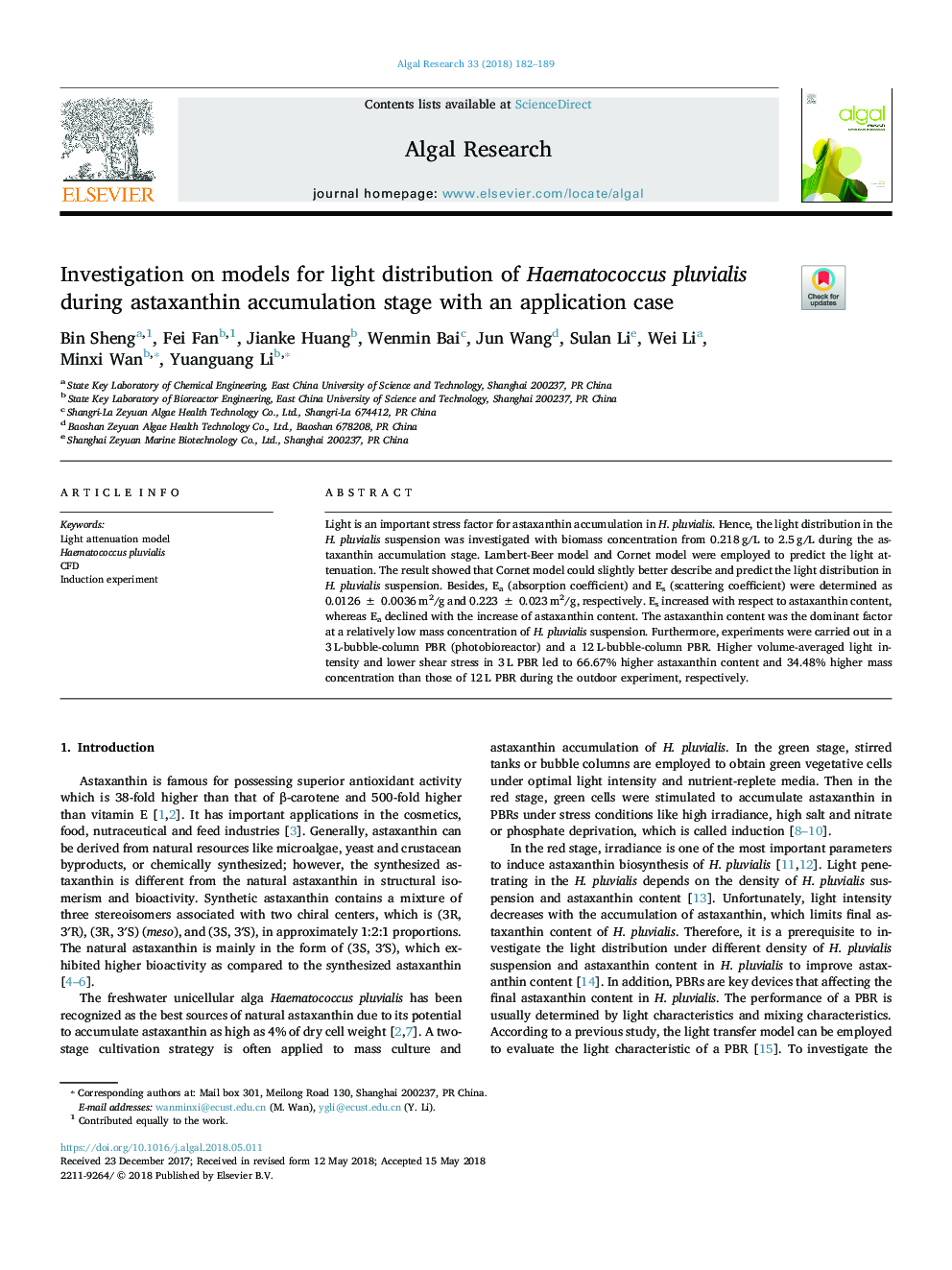| Article ID | Journal | Published Year | Pages | File Type |
|---|---|---|---|---|
| 8085704 | Algal Research | 2018 | 8 Pages |
Abstract
Light is an important stress factor for astaxanthin accumulation in H. pluvialis. Hence, the light distribution in the H. pluvialis suspension was investigated with biomass concentration from 0.218â¯g/L to 2.5â¯g/L during the astaxanthin accumulation stage. Lambert-Beer model and Cornet model were employed to predict the light attenuation. The result showed that Cornet model could slightly better describe and predict the light distribution in H. pluvialis suspension. Besides, Ea (absorption coefficient) and Es (scattering coefficient) were determined as 0.0126â¯Â±â¯0.0036â¯m2/g and 0.223â¯Â±â¯0.023â¯m2/g, respectively. Es increased with respect to astaxanthin content, whereas Ea declined with the increase of astaxanthin content. The astaxanthin content was the dominant factor at a relatively low mass concentration of H. pluvialis suspension. Furthermore, experiments were carried out in a 3â¯L-bubble-column PBR (photobioreactor) and a 12â¯L-bubble-column PBR. Higher volume-averaged light intensity and lower shear stress in 3â¯L PBR led to 66.67% higher astaxanthin content and 34.48% higher mass concentration than those of 12â¯L PBR during the outdoor experiment, respectively.
Keywords
Related Topics
Physical Sciences and Engineering
Energy
Renewable Energy, Sustainability and the Environment
Authors
Bin Sheng, Fei Fan, Jianke Huang, Wenmin Bai, Jun Wang, Sulan Li, Wei Li, Minxi Wan, Yuanguang Li,
